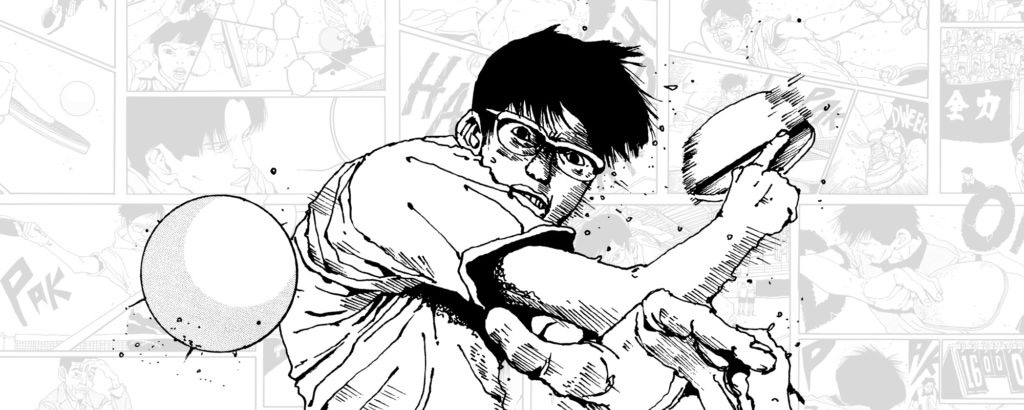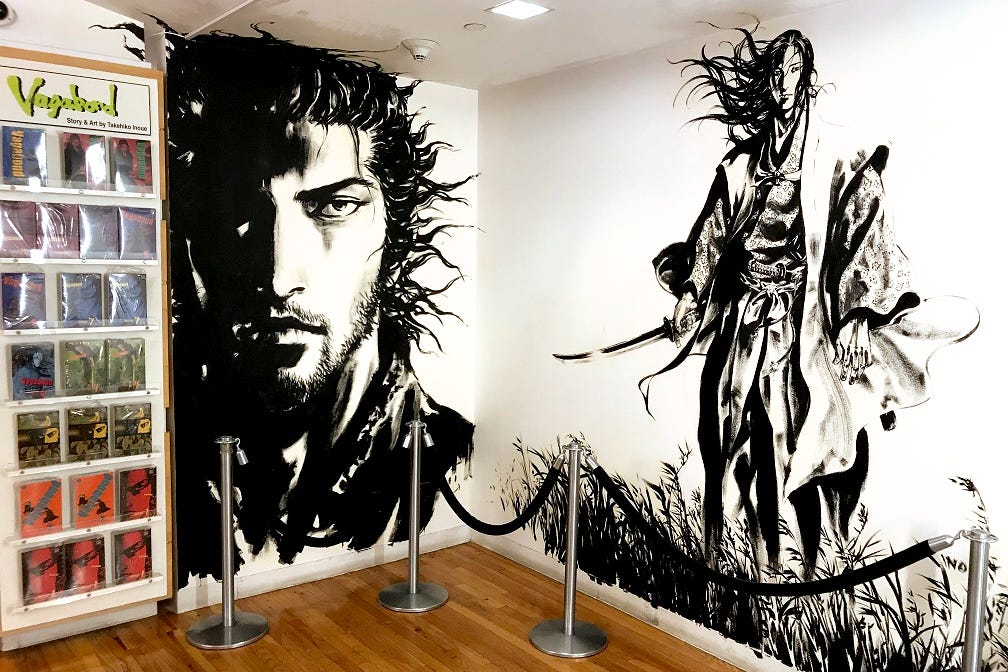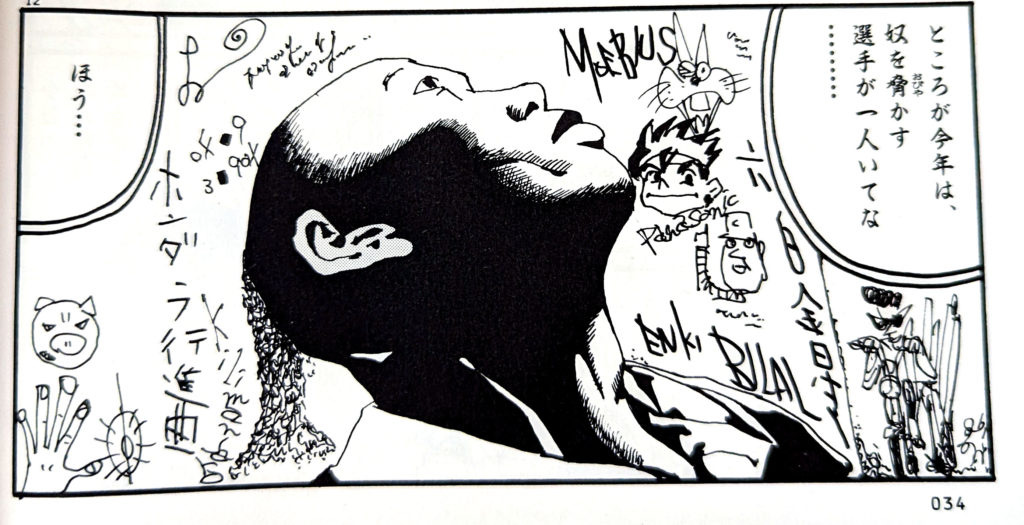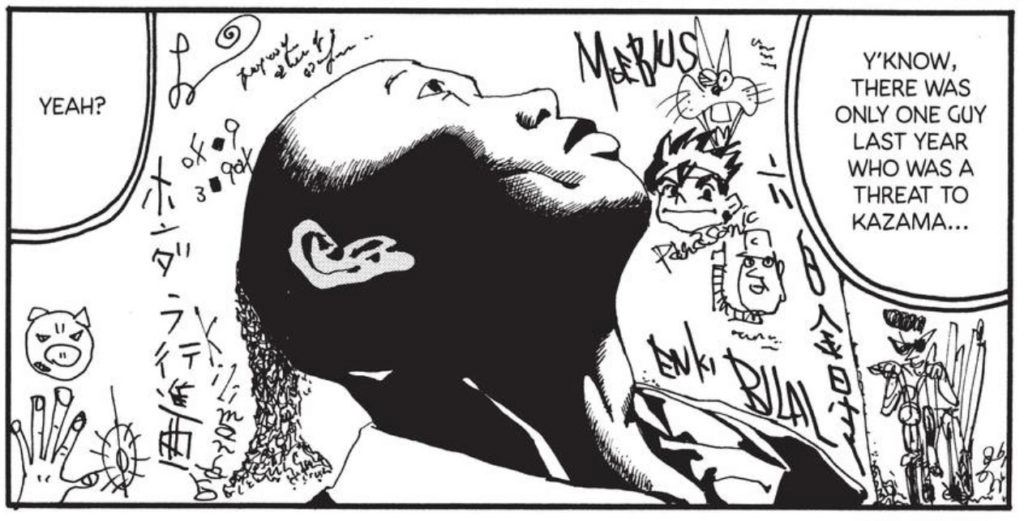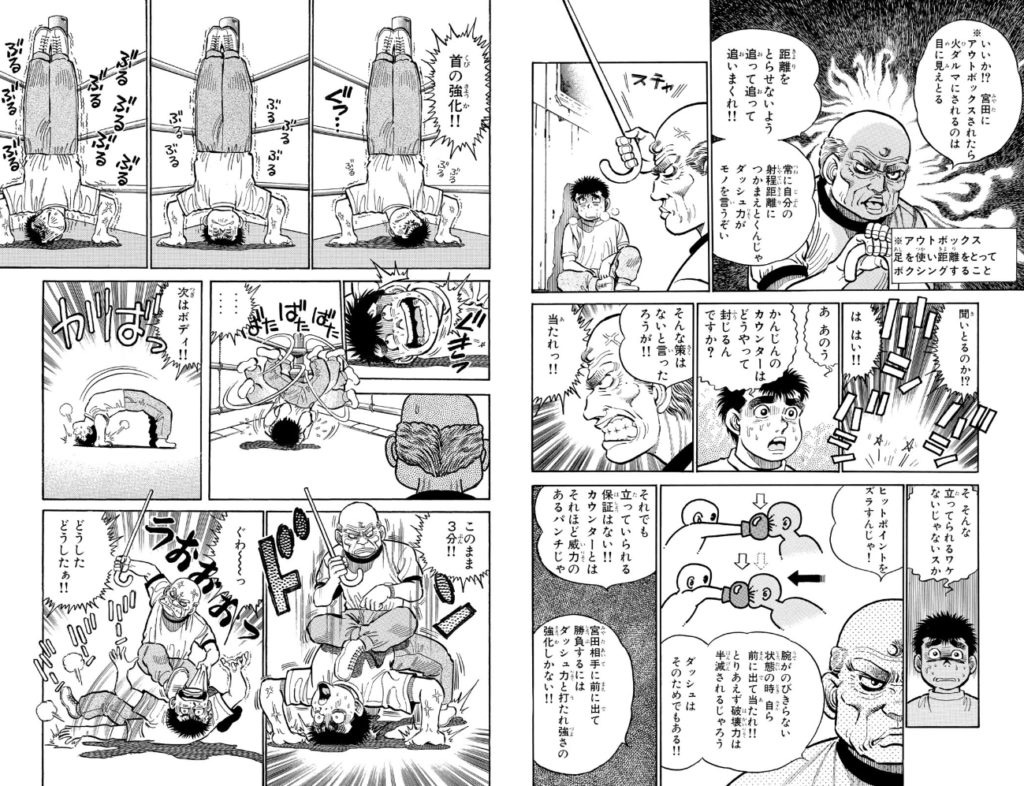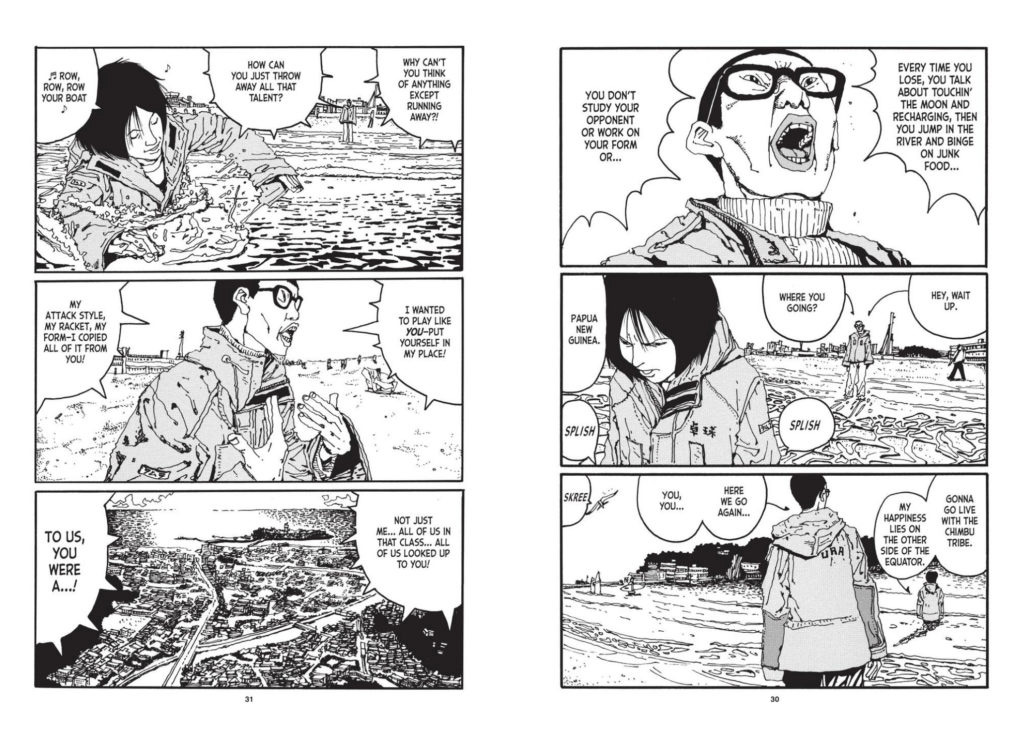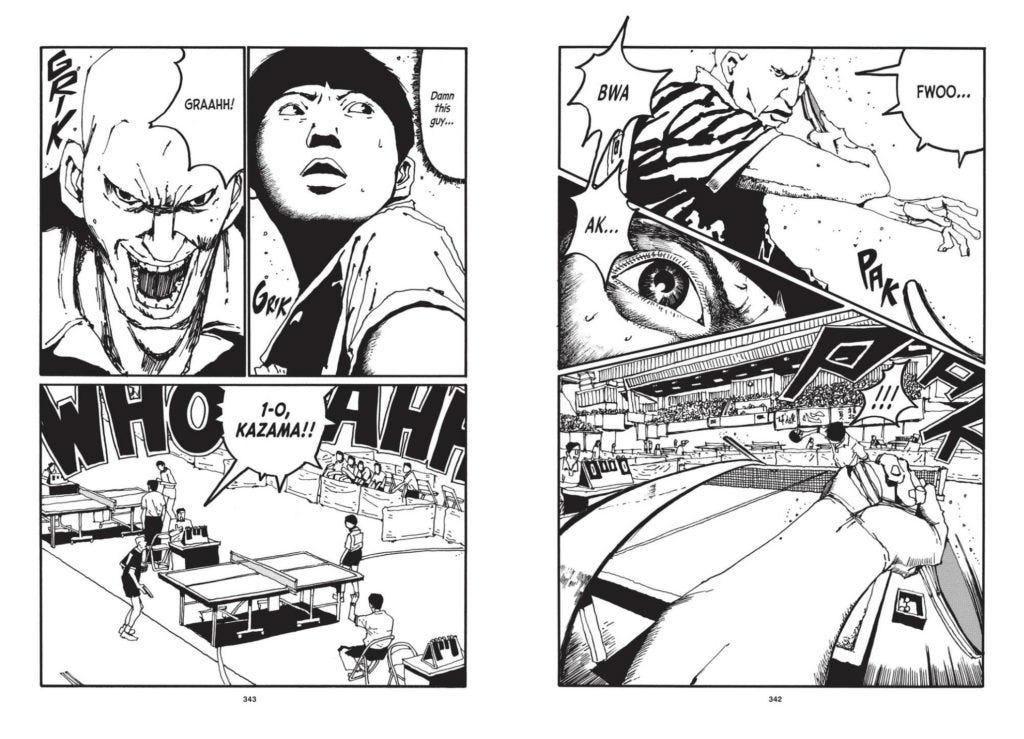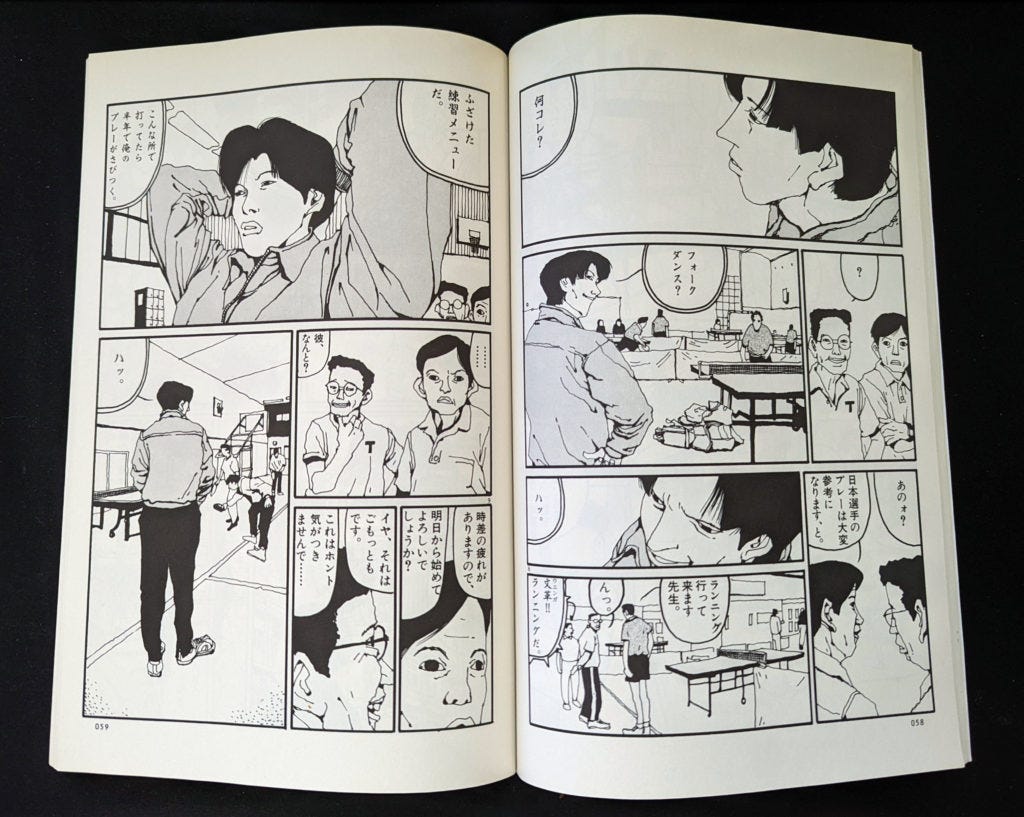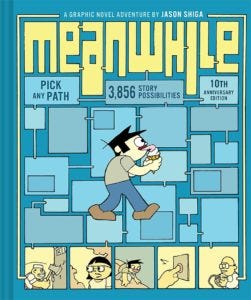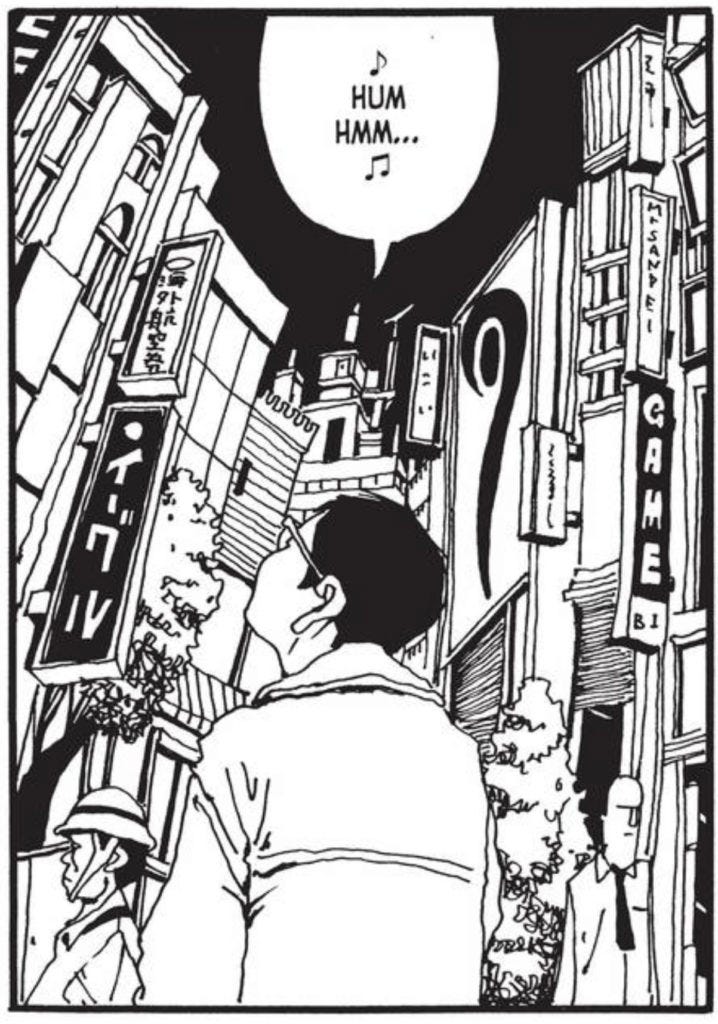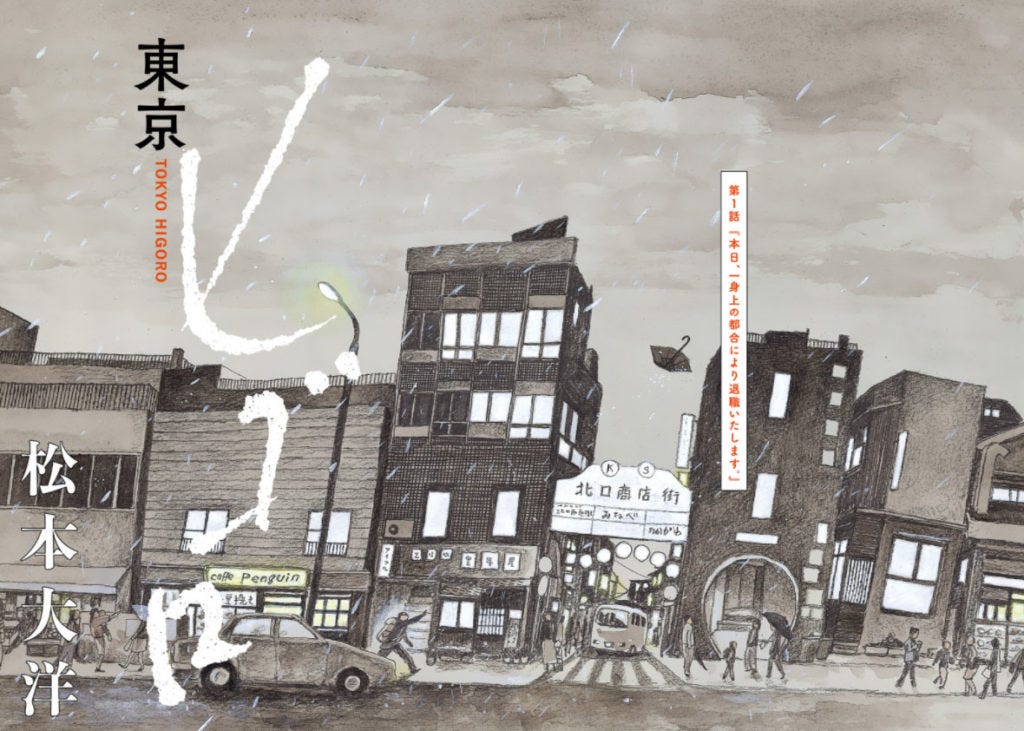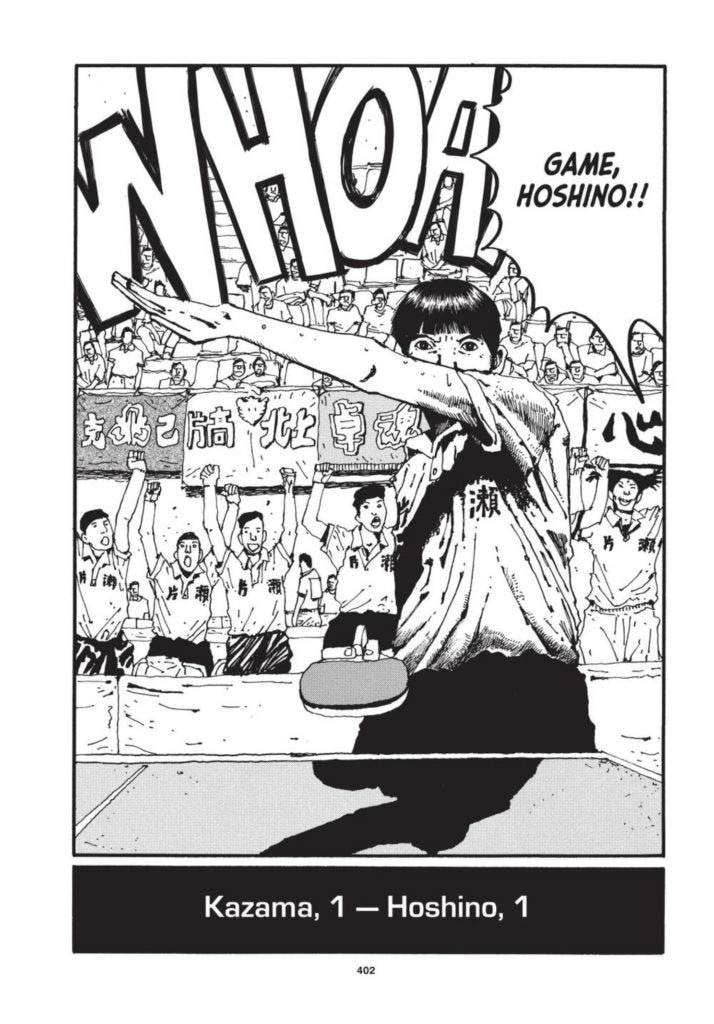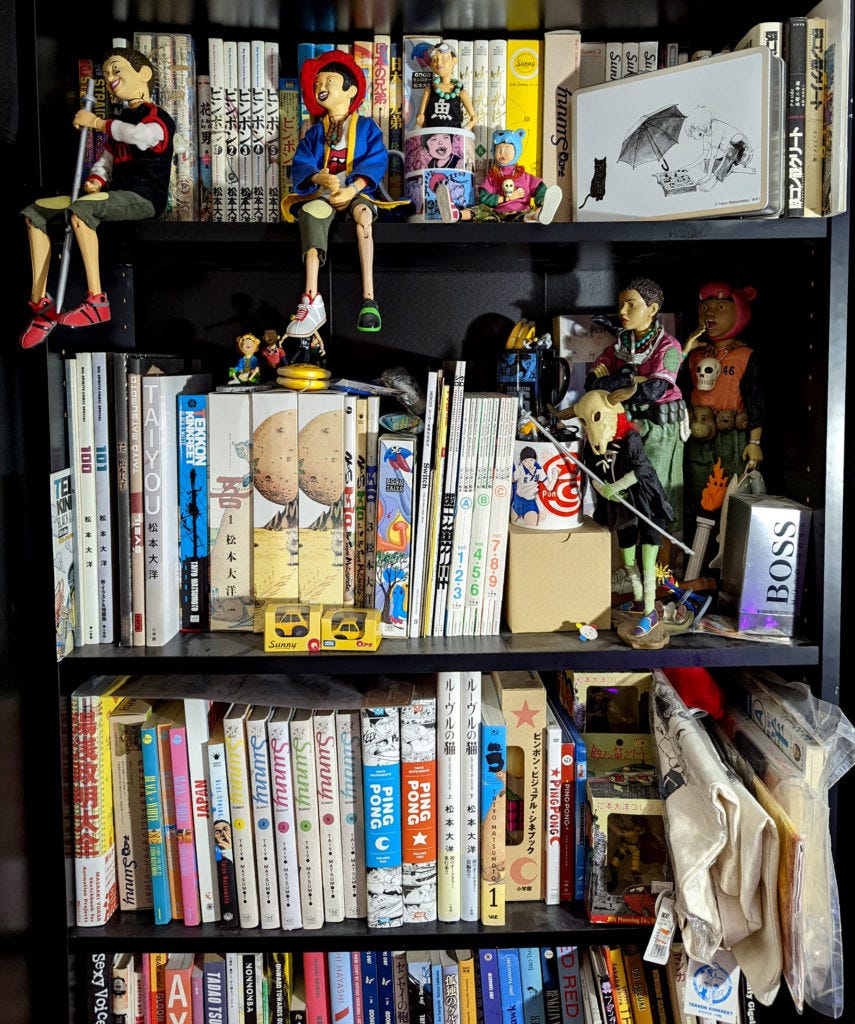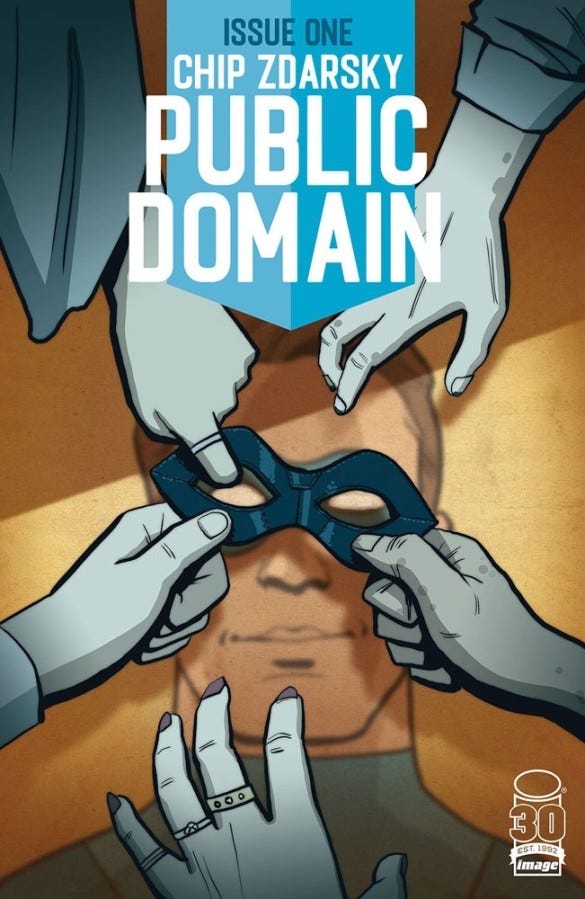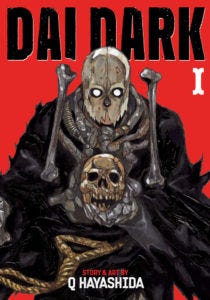PODCAST - Episode 59: Ping Pong by Taiyo Matsumoto
Enter the exciting world of sports manga through Taiyo Matsumoto's tale about table tennis, friendship, competition and GUTS!
“They’re reading a manga… about Ping Pong? But why? How good could it possibly be? Wait, did Chip say it might be his favourite new manga of all time? Chip said that, not Christopher, who’s deeply biased towards liking Matsumoto’s work? Wow. Wow. Maybe I gotta listen to that episode after all.” Get ready our (believe it or not) first episode about a sports manga for Mangasplaining!
Listen and Subscribe to the Podcast:
Google | Apple | Stitcher | RedCircle | Amazon | Radio Public | PocketCast | Spotify
And as always, you can click through to the website or read this in the app, at your convenience.
Ping Pong Volumes 1 & 2
By Taiyo Matsumoto
Translation & English Adaptation by Michael Arias
Touch-up Art & lettering by Deron Bennett
Cover & interior design by Adam Grano
Edited by Mike Montessa
Published by VIZ Media (Print/Digital)
Show notes by Christopher Woodrow-Butcher and Deb Aoki. Audio editing by David Brothers
Before we get started:
Hi, it’s Christopher. I mentioned in this episode that I’d be writing an article on Ping Pong. It’s coming. The last couple weeks have been a bit cramped with things to do, so sadly it won’t be up this week. But… soon. I’ll update this section of the text when it’s ready. I did dig up some of the reference material that I was talking about in this episode, and I can share that with you here. I did dig up some of the reference material that I was talking about in this episode, and I can share that with you here.
First, there was an online fan website called “Tokyo Cool” that translated an interview with Taiyo Matsumoto in 1995(!). The site was taken offline, but I archived the interview. It’s from the time period just before Matsumoto starts Ping Pong. There’s some funky stuff happening with weird characters in the text, so it might be kind of a pain in the butt to read, but if you’re as much of a fan as I am, give it a shot.
I also wrote this overview of Taiyo Matsumoto’s work in 2007, which again, has some real bad character-set issues, but if you’re curious about Chris-from-15-years’-ago’s-take on Matsumoto’s work, well, the internet can help you with that!
Finally, the website Mangabrog has got three feature-length interviews with Matsumoto, alongside other cartoonists, and they’re great too. Check them out.
01:15 Here’s how VIZ Media describes Ping Pong:
Makoto “Smile” Tsukimoto and his friend Yutaka “Peco” Hoshino have been playing table tennis since they were kids, but as they enter high school, they find that the game has changed. Seeing potential in them that they themselves don’t fully realize, the coach recruits them for the school team. Bringing out their best will mean challenging the top players from rival schools in the summer tournament, including an ace Chinese exchange student who almost made the Olympic team. With the pressure on, can Smile and Peco take the heat and make it into the finals?
- VIZ Media website
If you’re not convinced to pick up Ping Pong for yourself yet, VIZ also wrote up a whole blog post about the series.
02:25 Yes, it’s true. This thought occurred to me as we were taping, but I think Matsumoto’s Ping Pong is the first official sports manga that we’ve read for the podcast! We’ve talked about the nature of sports manga, shonen manga, quite a bit, including many mentions of boxing manga Hajime no Ippo, basketball manga series Slam Dunk and REAL, and lots of others. But we finally read one! Hope you enjoy listening to this episode as much as we did recording it.
02:50 That’s right, there’s a Ping Pong anime! And it’s… VERY faithful to the manga, while also being very much its own thing. Directed by Masaaki Yuasa (who also did Devilman Crybaby and another upcoming collaboration with character designs by Taiyo Matsumoto, Inu-Oh), it includes scenes from the manga, animated, as well as live action segments. I thought I caught a few moments that looked like they might even be rotoscoped from the live action footage at points, though I have no idea if that’s true. Story-wise, I feel like they take time to add in scenes (and characters) to flesh the story out a little bit. I feel like I know all of the boys of Ping Pong a little better having watched it. It’s fascinating. Anyway, the anime is a pretty close adaptation of the manga, with a few little extras, and I recommend it highly… though the manga is better.
Oh man, I try not to shit on English dubbing, but, uh, maybe watch it subtitled.
[Deb:] You can also watch the entire 11 episode anime series via Funimation.com: https://www.funimation.com/shows/ping-pong-the-animation/
03:55 There is, in fact, a Ping Pong table in the VIZ offices. I couldn’t find a ‘public’ photo of it online, but I know that, pre-COVID, it got some decent use. :)
04:05 This theme of beautiful-ugly is one that comes up quite a bit this episode, and in Japanese the concept is something akin to Heta-Uma, or bad-good, referring to art that’s bad but it works. Very few heta-uma manga have been translated into English… hm, maybe we should go ahead and cover one at some point.
[Deb:] If you’d like to get a taste of that so-bad-it’s-kinda-good heta-uma manga vibe, check out Tokyo Zombie by Yusaku Hanakuma from Last Gasp!
[Chris:] Oh man, that's a great book! I kind of thought it was out of print, but Amazon is showing that there are 19 copies in stock at cover price. It's also available to buy now, directly from Last Gasp: https://lastgasp.com/products/tokyo-zombie I highly recommend grabbing a copy. It's wild.
ANYWAY, drawing someone really well but making them look bad isn’t super-prevalent in commercial manga, so Matsumoto does some great work here to right that wrong. First up, there’s the shaky-line drawing of Peco on the chapter 2 title page:
But I think David is getting at drawings like these next ones, where you can still clearly tell it’s the same character in both drawings, but how extremely they’re drawn in each is really wild.
05:09 Oh, Chip.
05:30 SPOILERS: HE LIKED IT!
06:05 Whoa, best book?
08:47 There’s a lot of drawings of Ping Pong matches in this manga, and every single one is awesome. It’s pretty impressive.
09:50 While Smile and Peco are at the center of this, there are really five different boys’ stories on display. Moreover, there are a number of secondary and tertiary characters, and all of them have a unique style, even when they’re sometimes a little amusing. For example, the 'bad guys' team all shaves their heads bald as part of playing and discipline, but they all still look pretty distinct as individuals -- that's some good caricature/character design:
There’s a lot of great images like that, which just underline how Matsumoto has made all of the characters feel real and differentiated. It’s good stuff.
10:30 Man, there’s… space… here for a whole bunch of writing on the artistic evolution of Taiyo Matsumoto. I covered some of that in my overview of Matsumoto’s work linked up top, but I think the easiest thing to do would be to show you the cover of the first edition of Ping Pong in Japan, next to the new art he created in conjunction with Ping Pong: The Animation in 2016.
He’s changed and evolved during his artistic career, and I think that’s pretty darned cool.
14:10 Shout out to Adam Grano for a great job designing the book! It looks incredible! And to the whole team of interested folks who made it happen!
15:50 David says “Maybe if you take it easy on your friend for his whole life, you’ll stunt his growth and ruin your friendship.” and yeah, that’s a whole thing in this book. I think there's different ways to interpret the relationship between the boys too... I think Peco always knew that Smile had it in him to be great, and wanted it (you can see how he reacts during the match between Smile and Coach), but at the same time, knowing that if Smile changes, it will definitely change their friendship... that's a big thing too. Good stuff in here.
17:55 I checked and I can’t find my copy of that Inoue interview anymore. But I did find a few photos of that visit to New York, when he created the Vagabond mural in the Kinokuniya Bryant Park store. Here he is talking to designer extraordinaire Chip Kidd, and here’s his finished mural.
20:45 As David mentions, there are quite a few manga shout-outs in this one. First up, this Devilman shout-out on Demon’s shirt, which is… thematically appropriate.
[Deb:] For more Devilman fun, do check out Mangasplaining episode 45 when we get into all things Devilman and his creator, Go Nagai.
21:10 Next up, the graffiti in the washrooms is just incredible. I was curious to see how much of it was in English in the original Japanese version, and how much of it had been translated and then relettered in the VIZ version, so here’s a side by side comparison. Short answer: They're exactly the same, Matsumoto drew English graffiti!
[Deb:] Note that the cat drawing in the upper right is a nod to Fujio Akatsuka's kooky cat character, Nyarome from Moretsu Ataro (Extraordinary Ataro)! See more about Fujio Akatsuka's comedy manga at Fujio Pro's website.
21:40 So the Ping Pong live action movie is interesting! I know it’s occasionally a bit divisive in the fandom, as they did round off some of the edges and sort of… adjust… a scene that hinted at suicide, among other changes, but it was my first exposure to the material and I can’t help loving it. Anyway, check out the trailer.
See more about the Ping Pong movie at IMDb.
It’s actually on Netflix… in Japan… with no subtitles, if you have a working VPN and a subscription.
[Deb:] Fun fact! Ping Pong was one of the live action movies released by New People Entertainment, a company founded by Seiji Horibuchi, who is a co-founder of VIZ Media. Here's their trailer for the DVD release of the film with English subtitles, which is actually still available on Amazon.
24:10 The “Boxing One” to which Chip refers is Hajime No Ippo, which has hit more than 100 volumes. Clearly we will cover this if it ever gets licensed. The English versions that have popped up on Amazon are scanlations, unfortunately.
[Deb:] ] An official English translation of Hajime no Ippo manga is pretty much a long shot due to its length, but do watch and support the Hajime no Ippo anime! Crunchyroll is streaming it now and Diskotek Media has several seasons on DVD/Blu-Ray now.
Bookwalker's Japanese site also has the Japanese edition of Hajime no Ippo available as digital versions for purchase, and if you can read French, there's the entire series available in that language as well from Kurokawa.
25:40 I don’t think I’ve ever seen anyone really write about this, but the Shonen Jump house style in the 1980s, with everyone following in the footsteps of artist Tetsuo Hara’s footsteps. We talked in a previous show’s notes about how Hirohiko Araki started out on Jojo’s Bizarre Adventure with a style deeply inspired by Hara-sensei, but there were many other titles at the time that were deeply influenced by his incredibly ‘manly’ manga.
Hara himself credits another very manly manga-ka, Ryoichi Ikegami (co-creator of Crying Freeman, available now from Dark Horse), among his influences, and you can see where the two authors might overlap in early works like Mai, The Psychic Girl (published by VIZ Media, but long out of print) though Ikegami would go on to a much more refined, photo-influenced style. And that’s before you get into the influence that these guys had on comics in Hong Kong. If anyone knows more about 1990s Shonen Jump history (archaeology?) cares to write that up, you’ve got an eager reader here!
28:05 The MMA Fighter manga is All-Rounder Meguru by Hiroki Endo, from Kodansha. It’s a favorite of both David and Deb, so this won’t be the last you'll hear about this one…
32:50 So I referenced it above, but here’s a double page spread from the scene with Demon and Peco on the beach. You can see why they took it out of the live action movie, it’s kind of a downer!
35:50 Tamura has a few choice words for Butterfly Joe, and it hints at their complicated relationship and history.
36:15 “The kind of expert where you don’t see it coming,” like from Akiko Higashimura’s Blank Canvas, something we talked about a bit in Mangasplaining episode 31.
37:30 Deb DID send us a photo! This is her granddad (Jiji), who gives off real Taiyo Matsumoto vibes. Thanks for sharing this with us, Deb!
38:00 I didn’t go back to it as host, but I’m glad Chip jumped in to talk more about the humour of Ping Pong. It’s an amazing narrative moment to switch character perspectives to an entirely new character for a few pages, just to basically chew them up and spit them out.
39:00 Favorite drawings:
Chip calls out the bottom panel on Page 240, with Peco making a face, and the bruise on his head. Great drawing.
Chip also mentions that Matsumoto-sensei drew the classroom twice, from two different angles, and it was brilliant both times. From volume 1, pages 180-181.
We also talk about basically the end of the scene of Smile beating Butterfly Joe, which we excerpted above.
41:40 David references the ‘boss’ character Isshin Ashina from the video game Sekiro: Shadows Die Twice. I can kinda see it, he’s got that grizzled old man energy.
Oh man, now I wanna see Taiyo Matsumoto designs in a video game.
42:30 Haha, GUTS! Guts plays a role a few times in this manga, and I'm glad that connected with David. I accidentally grabbed the wrong GUTS image from what he mentioned, but this one is great too:
43:00 Matsumoto does some incredible stuff, where he moves from nearly abstract drawings, to hyper-realistic drawings, is really fantastic. Here’s a couple pages where that happens, and you can get a sense of what I’m talking about.
44:15 Here's those pages that David mentions, from Volume 1 on pages 390-391, where every panel DOES in fact look a little bit like it's drawn by someone different. Different effects trying to create different feelings, really interesting stuff.
45:20 Shout-out to letterer Deron Bennett! This is a great looking book! We wanted to show you a bit of a comparison between the original with the very intense sound effects, and the English edition with Bennett's work. Here's the same spread in English and Japanese, so you can compare.
Unfortunately though, I messed up and the double-line effect IS in the original Japanese, it's a great effect.
46:27 Jason Shiga is a comic creator and friend who incorporates all sorts of math, puzzles, and problem-solving into his comics works. His major release in this vein is the most complex ‘Choose Your Own Adventure” comic of all time, Meanwhile from Abrams, but he’s made a ton of great books, some of which are available to read on his website, shigabooks.com.
You can read a preview of Meanwhile on Amazon, actually!
49:50 “ Where’d you get the manga-style lollipop anyway?” really is a funny line.
50:30 Did he actually read it? We discuss it at the end of next week’s episode, Dick Fight Island. Tune in again next week!
53:00 Taiyo Matsumoto’s depiction of Tokyo from Ping Pong is awesome.
I really like this street scene from Kamakura as well, from his new work Tokyo Higoro.
I just miss him drawing cities like in Tekkon Kinkreet maybe?
[Deb:] We get more into how Matsumoto draws cities in Mangasplaining episode 10: Tekkon Kinkreet - give it a listen. :-)
53:15 Spoilers: This book was originally serialized in 1996 and 1997, so it’s, ugh, not 20 years old. It’s over 25 years old.
53:20 David brings up this crowd shot from page 401, in volume 2, and its great, probably photo-ref'd side-eye on the left side.
54:10 More references to the manga, television, and cartoons of Matsumoto’s youth, with this Kamen Rider pose from Page 402 of volume 2.
[Deb:] We got really into Kamen Rider in our episode about Seven Seas 50th anniversary "classic" edition of the manga. Go check out Mangasplaining episode 47: Kamen Rider, because we had a lot of fun talking about this iconic manga superhero.
And since we mentioned it, but I can't find where, there's also references to Gigant (Hiroya Oku's manga about a very big, very buxom adult film star, which is available now from Seven Seas Entertainment)
57:00 This was the first episode we recorded after Deb and I returned from Europe, plus David had some dentist stuff, and Chip is Chip, it was a rough week. Listening back though, I think this episode turned out okay. What do you think?
58:45 No. 5 is a fantastic superhero story that’s deeply difficult to read at times. Here’s the official description from the VIZ website, maybe it makes more sense than my rambling explanation:
In a world where most of the earth has become a harsh desert, the Rainbow Council of the Peace Corps has a growing crisis on its hands. No. 5, one member of a team of super-powered global security guardians and a top marksman, has gone rogue. Now the other guardians have to hunt down No. 5 and his mysterious companion, Matryoshka. But why did No. 5 turn against the council, and what will it mean for the future of the world?
-VIZ Media website
1:01:20 Here we shout out the short one-shot manga Higoro - These Days, which was eventually turned into Matsumoto’s newest series Tokyo Higoro, serializing now from Shogakukan. If you wanna subscribe for $5 a month you can read it, along with a dozen other manga stories, at mangasplainingextra.com. :)
1:01:30 Since I’ve referenced it more than once, here’s my Taiyo Matsumoto collection. There are more secret titles and objects hidden away here, but I didn’t have time to arrange everything just so, and take a true glamour shot. Maybe another time. :-)
1:03:10 Check out Chip’s current dream project, Public Domain, which he’s serializing over on Substack. It’s fun! Also there’s a print version coming from Image Comics in June, so maybe you will like that version?
1:03:54 THE BREAK
It's time for our next three Mangasplaining book picks!
Deb picks:
Blue Giant Volumes 5 & 6 by Shinichi Ishizuka from Seven Seas Entertainment. That’s right! Skipping ahead and starting mid-run, we’ll be reading this Jazz manga at the moment when protagonist Dai has graduated from high school in Sendai, and enters the world of being an adult working musician in Tokyo.
[Deb:] I’m super excited about the upcoming animated adaptation of Blue Giant, so I can actually hear the music while watching the story!
David picks:
DAI DARK Volume 1 by Q Hayashida, also from Seven Seas Entertainment. As we just learned from Deb, “Dai” is how you say ‘big’ in Japanese, so get ready to dig into the ‘big dark’ courtesy of Dorohedoro creator Q Hayashida.
[Deb:] Dai Dark is so new, there’s no anime to speak of, but there is an animated version of her prior series, Dorohedoro streaming now on Netflix so you can get a taste of her storytelling and art style. The Dorohedoro manga is also available now from VIZ Media.
Christopher picks:
Cross Game volume 1 by Mitsuru Adachi from VIZ Media. Volume 1 is actually a 3-volume bind up. It’s good.
[Deb:] There is actually a Cross Game anime that VIZ released back in the day, but I think it’s out of print? The trailer is still up on VIZ Media’s YouTube channel tho:
1:12:46 And here to end the episode is the "Bisley-esque" drawing of a little girl at the beach with a pitbull. :)
[Deb:] By "Bisley-esque," we're referring to the work by Simon Bisley, which you can appreciate in depth at his website, simonbisleyart.com.
.Thanks so much for listening! Please support your local comic and manga specialty shop when purchasing these books, and you can find one near you at comicshoplocator.com. You can also check your local library for print and digital lending options, they have TONS of manga! Finally, thanks to D.A.D.S. for their musical accompaniment this episode.
If you’re already a paid subscriber to Mangasplaining Extra, thank you! If you’re a free subscriber, consider upgrading and becoming a paid subscriber. We appreciate your support — you’re why we love doing this every week. :-)





